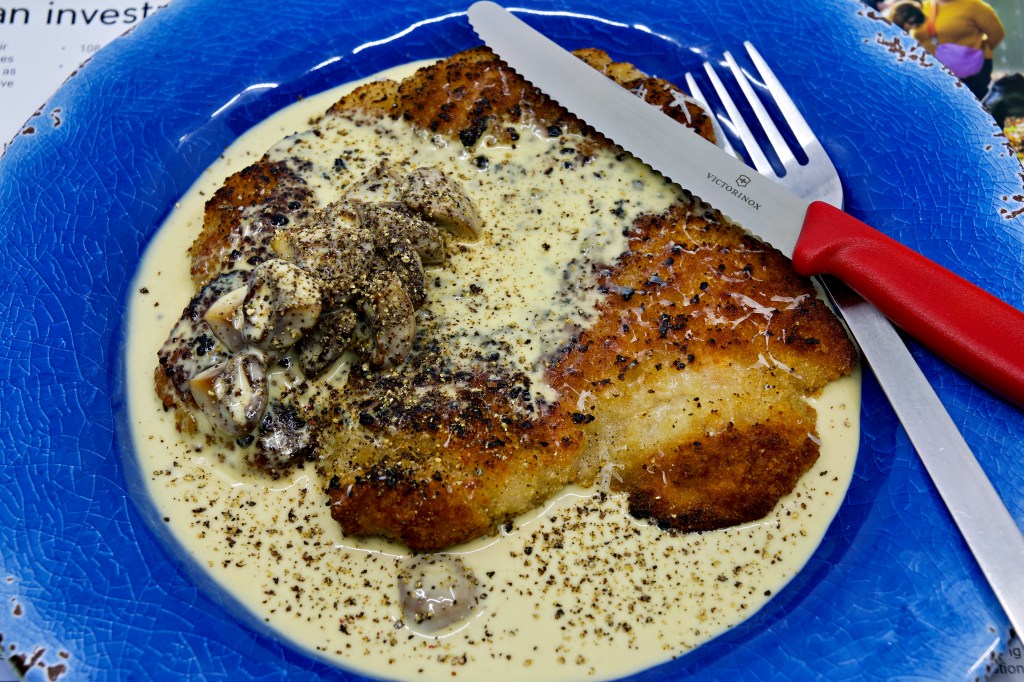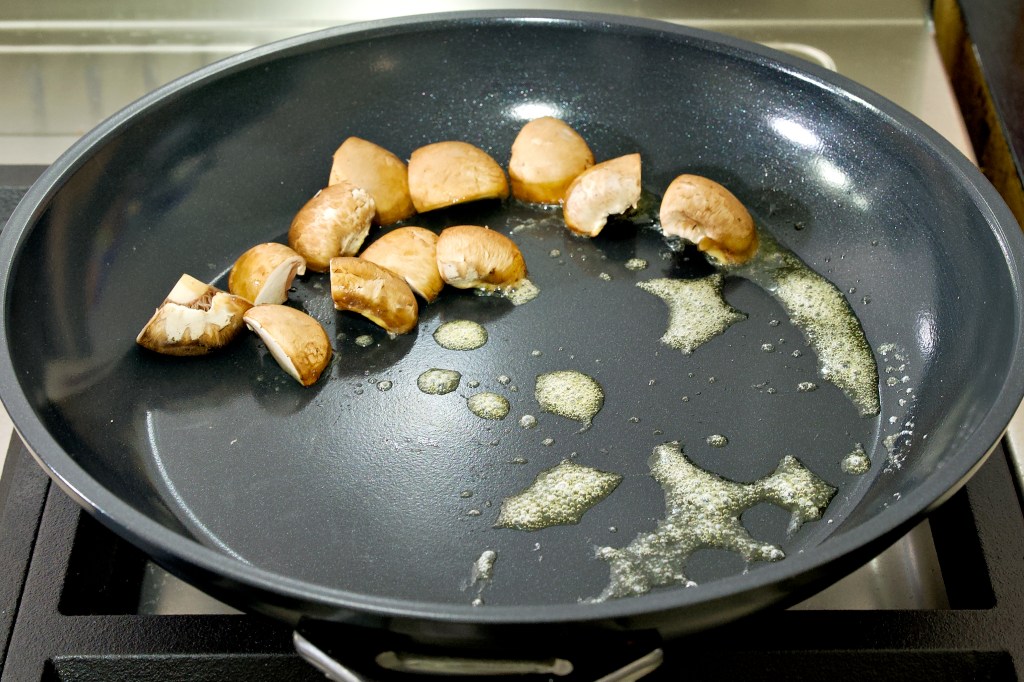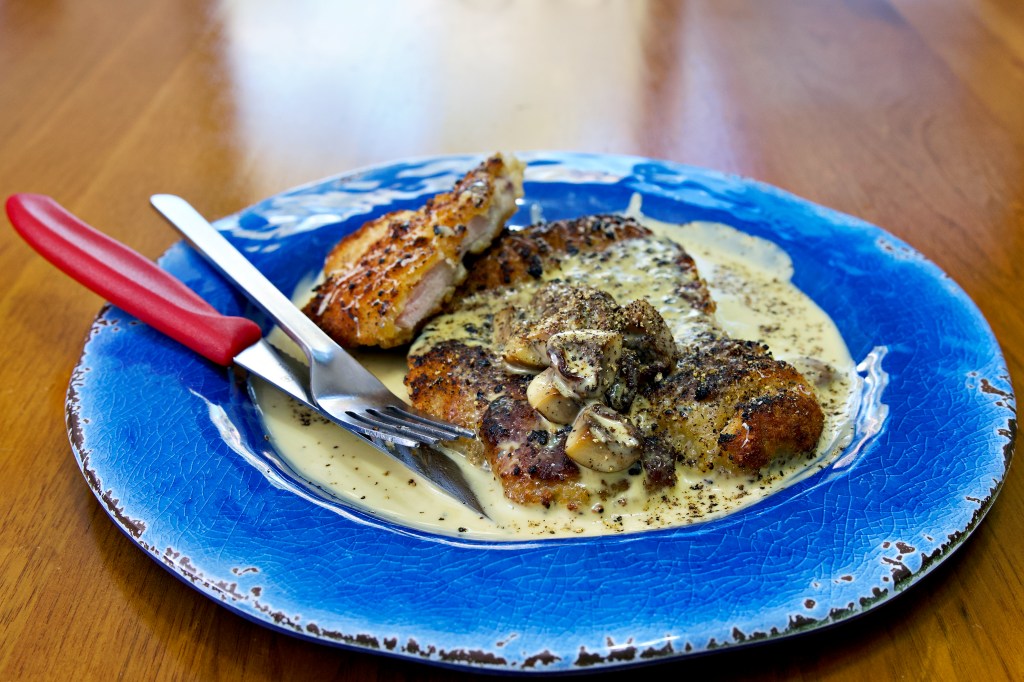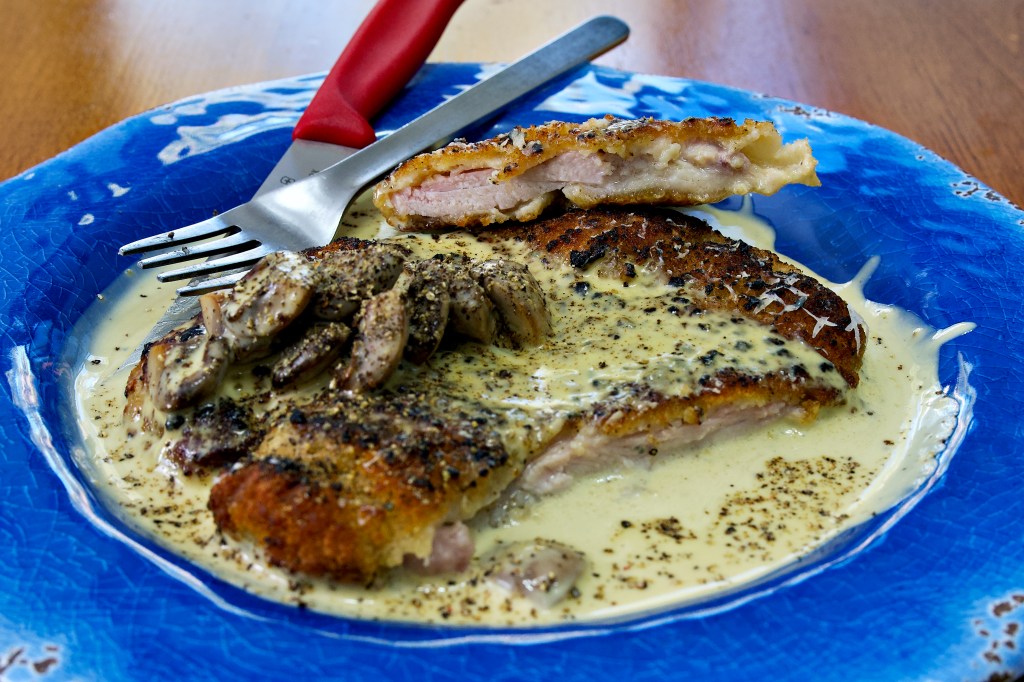Tonight’s meal is not elaborate. I bought the chicken from my butcher, so I didn’t create the crumbed chicken from scratch. I did make the sauce from basic ingredients.
Normally, I wouldn’t eat crumbed chicken (or any crumbed meat for that matter). I felt like celebrating.
I had a pretty good week. I spent a couple of days in Melbourne for work, and last night my footy team, viz., the Dolphins, defeated the Warriors in a tight game. While we led early, we were behind for much of the game and almost the entire second half. A last-minute try sealed the win. The win, however, came at a significant cost. Herbie and Jamayne are injured. Herbie’s hamstring injury may see him out for six weeks. Jamayne strained his groin early in the match and struggled with goal kicking. If he’s out for a few weeks, we’ll feel it. While not injured, Felise was sent to the sin bin for ten minutes at the end of the game. He’s just returned from a two-week suspension, and he may be suspended again. He’s a tough player and, in my opinion, the victim of circumstance.

Recipe
Ingredients
- Crumbed chicken (thigh)
- Beef fat
- Pure pouring cream
- Blue vein cheese
- Swiss brown mushrooms
- Butter
- Black peppercorns
Equipment
- Frypan
- Saucepan
- Barbecue grill
Instructions
Chicken
- Heat the barbecue grill.
- Melt some beef fat on the grill plate.
- Cook the chicken for 5 minutes on each side.
Mushroom sauce
- Sauté the mushrooms in a bit of butter.
- Crumble the blue vein cheese into a dash of cream and gently heat in a saucepan while stirring continuously.
- When the cheese and cream have “become one,” add in the mushrooms and keep stirring.
- Keep stirring until the sauce thickens.
Serving
- Place the crumbed chicken on a plate.
- Gently pour the mushroom and cheese sauce over the chicken.
- Season with freshly cracked black peppercorns.
Photographs
This is a gallery of photographs. Select one and scroll through the gallery.




Thoughts on the meal
The crumbed chicken was perfect. The meat was tender and tasty. The crumb had the perfect mouthfeel and absorbed the creamy cheesy sauce beautifully.
Questions
- Do you like crumbed chicken?
- Do you like crumbed meat in general?
- What’s your favourite dish using crumbed chicken?
Other photographs
This is a one-second exposure (handheld) of the shoreline from Henley Beach Jetty this morning, just after sunrise.


